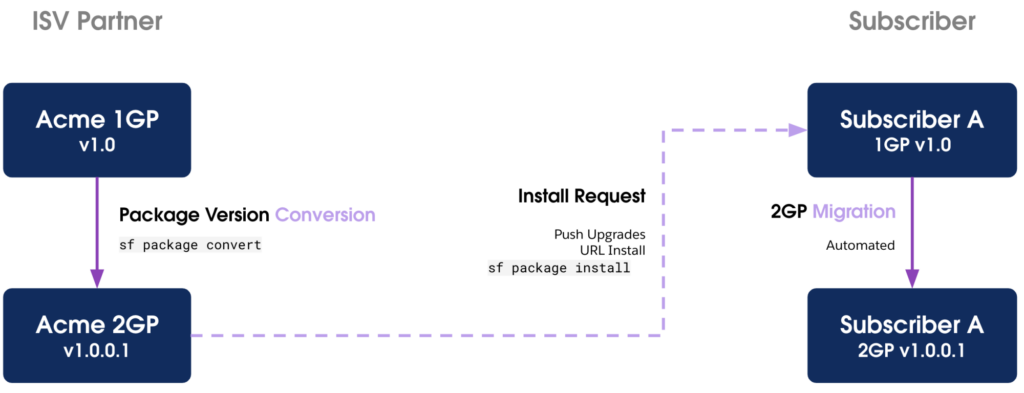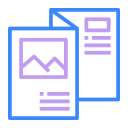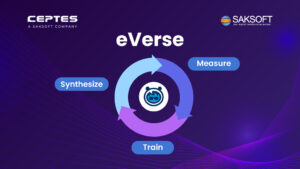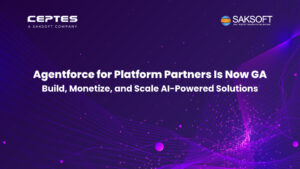Update: Salesforce has now made migrating to 2GP even easier with Package Migrations.
Salesforce has continually evolved its development ecosystem, providing developers with powerful tools to build, manage, and deploy custom applications. One of the key milestones in this journey has been the introduction of Salesforce Managed Packages, which have enabled developers to distribute and sell applications on the Salesforce AppExchange.
As the Salesforce platform grows, so does the need for more advanced packaging and deployment strategies. This is where the transition from 1st Generation Managed Packages (1GP) to 2nd Generation Managed Packages (2GP) comes into play. With the new Package Migrations (Now generally available with Summer ’25), this move is now faster and more automated than ever before.
What is a Managed Package?
A Brief History of Salesforce Managed Packages

The Benefits of Using 2GP for Package Development
1. Source-Driven Development:
2GP is built around a source-driven development model, which means that your package’s source code is the single source of truth. This approach aligns with modern development practices and allows for easier integration with version control systems like Git. It also enables continuous integration and continuous deployment (CI/CD) processes, which are essential for agile development teams.
2. Modular Packaging:
Unlike 1GP, where all components had to be bundled into a single package, 2GP allows for more modular packaging. This means you can create smaller, more focused packages that can be combined as needed. Modular packaging reduces complexity and makes it easier to manage dependencies between packages.
3. Flexible Versioning:
2GP offers more flexibility in versioning packages. With 1GP, each new version required a full upgrade of the package in the target org. In contrast, 2GP allows for more granular updates, making it easier to roll out new features and bug fixes without disrupting existing installations.
4. Enhanced Security and Governance:
2GP includes improved security and governance features, such as the ability to define package access controls and permissions more granularly. This ensures that only authorized users can install or update packages, reducing the risk of unauthorized changes.
5. Simplified Distribution and Installation:
2GP simplifies the process of distributing and installing packages. Packages can be installed directly from version control, eliminating the need for manual intervention. This makes it easier to deploy updates and new versions to customers or internal teams.
6. Better Support for Salesforce DX:
2GP is fully integrated with Salesforce DX, Salesforce’s modern development environment. This integration allows developers to take full advantage of Salesforce DX’s powerful features, such as scratch orgs, source tracking, and the CLI.

Say ‘Hello’ to Package Migrations: Simplifying the Move from 1GP to 2GP
Salesforce has now made it significantly easier for ISVs to move their existing 1GP managed packages to 2GP with a new feature called Package Migrations with additional CLI commands.
With this, you no longer need to manually recreate packages or rebuild customer installations. Instead, Salesforce provides new CLI commands that allow you to convert an existing 1GP package into a 2GP package and automatically migrate customer orgs using push upgrades or standard installs.
How it Works:
- Package Conversion: Use sf package convert command to convert a 1GP version into a 2GP package version with matching major.minor numbers.
- Migration: Once you’ve converted your 1GP package to 2GP using sf package convert, migrate customer orgs by installing the 2GP version using sf package install, URL, or push upgrade with the -migrate-to-2gp flag.
- Seamless Reference Switch: If the 2GP version matches the major.minor version of the installed 1GP package, Salesforce triggers an automatic reference switch—no metadata changes or manual steps needed. The org is now managed under 2GP for all future updates.
This is a major breakthrough for ISVs looking to modernize their packaging without disrupting their customers.
Mastering Second Generation Packaging in Data Cloud
Second-generation packaging (2GP) in Salesforce Data Cloud is a powerful tool for developers, administrators, and partners to create, manage, and deploy applications and customizations with ease. By leveraging Data Kits, you can bundle metadata into reusable templates, making the process seamless and code-free.
But, what are Data Kits?
Data Kits in Salesforce Data Cloud are portable, customizable bundles of metadata packaged as templates, created directly from the UI without coding. They allow you to deploy configurations across different dataspaces in a subscriber org.
For example, you can use a Data Kit to consistently set up data-driven applications in various customer environments.
Here’s a quick, Step-by-Step guide on creating a 2GP package in Data Cloud:
Setting Up Your Developer Environment:
Begin by setting up a developer environment tailored for 2GP. This involves obtaining a Developer edition org where you can define a unique namespace for your package. This namespace will be applied to all managed packages created with second-generation packaging.
Configuring Your DEV Hub Org:
Your Dev Hub org lets you create and manage your scratch orgs and it is the command center for managing your second-generation packages. Activate Dev Hub in your org, and configure it to handle multiple packages, ensuring a streamlined development and deployment process.
Linking Your Namespace:
A namespace ensures that your package components remain unique. Link the namespace in your first Developer Edition org to your Dev Hub org, setting the stage for creating distinct and conflict-free metadata packages.
Creating an SFDX Project:
Create an SFDX (Salesforce DX) project, which serves as the foundation of your 2GP package. This project will house all the metadata and customizations you plan to bundle into your Data Kit.
Preparing the proj-scratch-def.json File:
This file defines the shape and configuration of your scratch org. Tailor it to reflect the specific needs of your project, ensuring your scratch orgs are set up precisely as required.
Creating Scratch Orgs:
Scratch orgs are temporary environments used for development and testing. Create scratch orgs as needed to build, test, and refine your package components in a controlled environment.
Working with Data Kits:
Utilize Data Kits to package your metadata into reusable templates. These templates allow you to deploy the same configuration across multiple dataspaces without writing any code, enhancing efficiency.
Packaging Your Application:
Bundle your project components into a 2GP package, ensuring all metadata, configurations, and customizations are included. This package is now ready for deployment or distribution.
Promoting Your Package:
After thorough testing, promote your package to a production environment. This step ensures that your application is ready for use in live environments, offering a polished and reliable solution.
How CEPTES Helps You Leverage Package Migrations for 2GP Transition
-
Assessment and Planning:
CEPTES will assess your current 1GP packages and provide a detailed migration plan. This includes identifying dependencies, assessing compatibility, and outlining the steps needed to ensure a seamless transition. -
Migration Execution:
CEPTES will handle the entire migration process, from converting your 1GP packages to 2GP, to testing and validating the migrated packages. Our team of experts will ensure that the migration is completed with minimal disruption to your business operations. -
Post-Migration Support:
After the migration, CEPTES provides ongoing support to ensure that your new 2GP packages are running smoothly. We’ll help you with any issues that arise and provide guidance on best practices for managing and updating your 2GP packages.
Conclusion
The shift from 1GP to 2GP is a significant milestone in Salesforce package development. By making the move, organizations can take advantage of modern development practices, improved versioning, and more efficient package management.
With CEPTES by your side, the migration process can be seamless, allowing you to focus on what matters most—delivering value to your customers. If you’re considering a migration to 2GP, reach out to CEPTES today to learn more about how we can help you navigate this transition.
Resources:
Release Notes: Package Migration GA Details
Developer Guide: Move to Second-Generation Packages
CLI Reference: The package:convert Command

Nilamani Das
Nilamani is a thought leader who champions the integration of AI, Data, CRM and Trust to craft impactful marketing strategies. He carries 25+ years of expertise in the technology industry with expertise in Go-to-Market Strategy, Marketing, Digital Transformation, Vision Development and Business Innovation.
Share
Categories


















